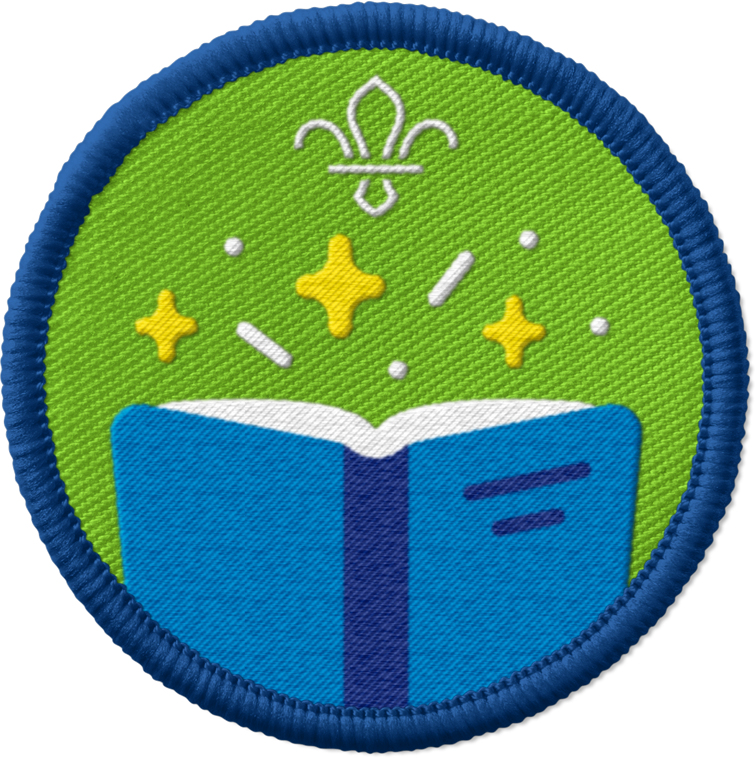The beaver that wouldn’t swim
You’ll need
- Pens or pencils
- A4 paper
Before you begin
- Use the safety checklist to help you plan and risk assess your activity. Additional help to carry out your risk assessment, including examples can be found here. Don’t forget to make sure all young people and adults involved in the activity know how to take part safely.
- Make sure you’ll have enough adult helpers. You may need some parents and carers to help if you’re short on helpers.
Run the activity
- Gather everyone together and make sure that everyone has a pen or pencil and some paper.
- Get the group together and read the following tale to them. If they can read the tale in a Scottish accent, even better.
‘The watter was too cauld, so on the carse he sat, when his good pal passed by, come soum called water rat. Hullo there wee Ratty, the Beaver did reply, but off his soft broon fur, he didnae take his eye. Then soum up a saumon, to walcome her pal, what’s wrong cannae you swim? Well I can show you how. Quit and lea’ said Beaver, I dinnae want your help, if ye dinnae now go, with my tail you ill skelp. Next along the river, there soum the old grey Guiss, He was a wickit chaup, and none could him refuise. Why don’t you soum, the Guiss to Beaver asked, jog on yer gate he said, so the Guiss hissed and blashed. Beaver he jumpet in, now sauf and sound from harm, the watter was not cauld, as Beaver’s fur is warm! Now Beaver soums all day, and skitters in the glen, and when his friends bid him, he’s aye nice in return.’
- See who understood what happened in the story. Did anyone hear any words they haven’t heard before? Did anyone work out what those words might mean?
- Read the verse again and have everyone write down what they think may be a ‘Scots’ word – a word not commonly used in the English language outside of Scotland. Each Scots word in the text is in bold.
- You could make this a competition to see who can identify the most Scots words. Repeat this for the second and third verses to see who has the best ear for the Scots language.
- Now read out the story like this:
‘The water was too cold, so on the riverbank he sat, when his good friend passed by, come swim called water rat. Hello there little Ratty, the Beaver did reply, but off his soft brown fur, he did not take his eye. Then swim up a salmon, to welcome her pal, what’s wrong can’t you swim? Well I can show you how. Quit and leave said Beaver, I don’t want your help, if ye don’t now go, with my tail you I’ll hit. Next along the river, there swim the old grey goose, He was always angry, and none could him refuse. Why don’t you swim, the goose to Beaver asked, go away, he said, so the goose hissed and splashed. Beaver he jumped in, now safe and sound from harm, the water was not cold, as Beaver’s fur is warm! Now Beaver swims all day, and splashes in the valley, and when his friends ask him, he’s always nice in return.’
- Everyone should talk about both versions of the tale. Ask everyone which version they enjoyed most. Find out what version they think made the most sense to them and which one was fun to listen to.
Reflection
The group have heard two versions of a traditional tale. One version of the tale was in plain or common English, while the other was in the Scots dialect, which meant that some of the words were different. Had anyone heard any Scots words before? Did any of them sound similar to common English words?
The Scots version of this tale was the original. It shows us how different people and cultures use the English language to communicate in their own way. Did anyone work out that the Scots version was the original just by listening? One clue was the animals that appeared in the tale – salmon, in particular, are often found in Scotland. What other animals might the beaver see, now that he can swim up the river?
Safety
All activities must be safely managed. You must complete a thorough risk assessment and take appropriate steps to reduce risk. Use the safety checklist to help you plan and risk assess your activity. Always get approval for the activity, and have suitable supervision and an InTouch process.
After reading out the Scots version of the tale, the person leading the activity could give the group a pop quiz of Scots terms, if the group are feeling confident.
Use the English versions of the more-difficult-to-guess Scots terms, if you’re doing a quiz with groups that found the activity more difficult.
Make it accessible
All Scout activities should be inclusive and accessible.
The group should draw what happens in the tale to create a comic strip. Each person could draw a different scene and come together to tell the story when they are finished.



